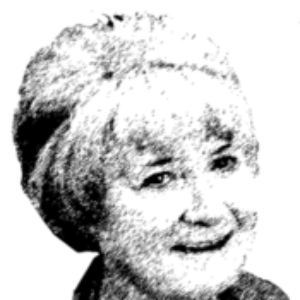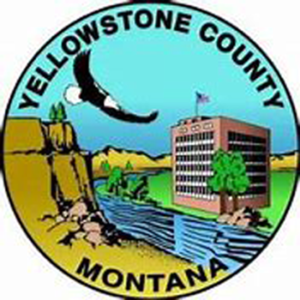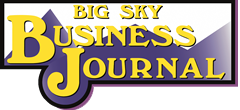By Evelyn Pyburn
When it comes to housing affordability, Billings is in a better situation than many other areas of the state, but the plight of other areas still impacts Billings.
“It’s better to get ahead of the issue of housing affordability,” said Colten Bryant, in speaking at the Housing Strategy Summit in Billings. Bryant and Dave Dixon of Cushing Terrell presented data on a housing study of a five-county region in mid-southern Montana.
To get ahead of what has become a growing concern in Billings of escalating home prices was exactly the purpose of the housing summit which featured Dr. Pat Barkey of the Bureau of Business and Economic Research. Barkey said that “high prices matter” when it comes to encouraging economic development, and he attributed much of the problem to regulations, policies and laws that increase the cost of building. “These things impact where, how and whether builders build,” said Barkey.
When it comes to how much local communities regulate the development and construction of housing, Montana is relatively lightly regulated compared to other parts of the country. The degree to which regulations impose costs on housing development is termed “cost burdened,” and in an analysis of Montana cities, Barkey pointed out that western areas of the state are in the upper echelons of being cost burdened. “Yellowstone County is not burdened as much as other counties.”
While a number of factors impact the cost of building a house, “prices are higher than they should be,” in Billings, according to Barkey.
“Prices are pushed upward by bad policy and restrictions placed on ownership,” said Barkey, “and they reflect super charged federal policies that push demand.”
The federal government spends $200 billion annually on programs that subsidize housing, programs like FHA, VA, Fannie Mae and Freddie Mac, and 30 year mortgages with no prepayment penalties. They “spike demand,” said Barkey, while local policies tend to restrict supply.
When consumers have to spend more on housing they have less to spend on others things.
High priced housing “is a real impediment to wage workers.” It is difficult to get workers if they can’t afford housing.
“The economy is a story of movement. We move. It defines what America is…If people can’t move because they are locked out by prices you are affecting commerce.”
While it is commonly believed that out-of-state demand, coupled with cheap credit, is driving price growth in most areas of the state, the trend is too new to have much data. In an effort to answer the question of from where is the demand coming, Barkey analyzed “forwarding requests” through the US Postal Service. Although inexact, the data indicates that most of the demand is coming from people in the state moving to other areas in the state, but there are some indications that more in-migration has come from other states over the past year than over previous years.
Barkey also pointed out that residential construction has “cooled off” since 2013. “New home building has slowly declined.” Since 1999 through 2007, there were 7100 new housing units built in Billings. Housing units were being built at a ratio of .06 for each new job in the community – a ratio that has since declined to 1.7 units for each job.
What is the problem?
Barkey answers: high demand, land use policies, regulation and federal policies “that pour fuel on the fire.”
The study conducted by Cushing Terrell, which focused on Yellowstone, Carbon, Big Horn, Stillwater, and Sweet Grass Counties, as well as the Crow Reservation, revealed that most of the housing that is being built is upper end homes, said Bryant.
The study, which was conducted on behalf of Beartooth RC&D, revealed:
–Minimum lot size is a problem.
–The rental market is tight, with very little available for rent in mountainous areas.
–A need for middle-range priced housing.
–It is difficult to get workers when housing is so tight.
–There is a need for funding in grants for new housing.
–Wages are not keeping pace with housing prices, which is a national trend.
–It is important to consider housing costs in trying to be economically competitive.
Dixon said that basically the study showed that demand is not being met.
Among the numerous recommendations they made was the implementation of a number of various taxes to subsidize “workforce” housing projects, as well as tax investment financing, or implementation of resort tax, property tax abatements, housing trust funds, and infrastructure assistance, and using city/ county –owned land to make projects more feasible.
And, added Bryant, “enable the market to work.”
Comments came from other participants in the program:
Billings is “extremely well positioned” in terms of meeting future water needs according to Mark Elison, Deputy Director of Montana Department of Natural Resources, who is a hydrologist in the Billings Regional Office. He stated that the city has been very proactive in preparing for future needs, but he added that it is costly.
Deb Sokoloski, with Opportunity Mortgage of Opportunity Bank of Montana, said that access to credit and affordable programs “are there.” The problem is that “wages are not keeping up with the price of housing” and “nothing in the affordable price range is available to buy.” Also, sellers are not accepting offers from buyers who are financing through programs like VA or FHA, which pushes the buyers into conventional loans. For buyers to make 12 offers before getting the 13th accepted “is not out of the norm,” said Sokoloski.
Greg McCall of McCall Homes said that while his company has tried to design and build homes utilizing more efficient and affordable means and materials, their most serious problem is not having “the quantity of tradesman to use advanced technology.” He said that his company could easily use five additional crews. Also, given the undependability of getting building materials, they have returned to an era of ordering in advance and warehousing.
“We are seeing a fear based market,” said Bob Leach of Western Property Management. “Buyers are fearing not being able to afford a home.” In their anxiousness they are foregoing appraisals and inspections. The current average sales price is $343,000. The Billings housing inventory (number of properties listed for sale) is less than one month’s supply, while a more normal level would be a six or seven month supply. Leach noted that demand has been growing over the last 11 years.
The housing situation is such that more young people (ages 18-29) remain living with their parents than at any time in the last 120 years, said Leach. Even after the Great Depression, 48 percent of young people sill lived with their parents, while now the rate is 52 percent.
Leach said that most of the construction of homes is happening in the $300,000 to $400,000 price range. And, “there are more homes on the market over $500,000 than any other category.”
Leach went on to point out that of the 16,000 building permits issued in Yellowstone County over the past ten years, most are being built outside city limits. “We don’t have a lot of growth occurring in the city,” he said, adding, “Rental demand is the highest I have ever seen….vacancy rate is below one percent.”
While businesses need workers, “workers need to be able to afford housing.” He urged schools to “educate to skills rather than sending everyone off to college.”
Rod Lorenz of Montana Real Estate Brokers said that construction is being slowed by the long delays in getting building components and by increased costs, although costs have been coming down. A sheet of plywood that used to cost $10 rocketed to $75-$80, but it has now dropped to about $15. He also commented on the lack of tradesman. Framers are booked 4 to 6 months out. The situation is one that has most impacted the building of $115,000 to $120,000 homes.
Someone else commented that building costs while now dropping, could increase again.
The price of lots have “more than tripled”.
Jeff Junkert, a veteran home builder of the Billings area, underscored how much the cost of lot development has increased. There was a time that a typical lot cost around $15,000 but now costs between $70,000 to $100,000. Having previously built homes outside the city limits in the county, Junkert said, there is “quite a disparity” in cost between building in the city and the county.
Out-of-state developers are coming to Montana and Billings, reported Wayne Nelson, President of Stockman Bank. As a rule, there are not a lot of residential home developers in Billings, said Nelson, noting that it takes a great deal of wherewithal to be a developer. But, “in hot housing markets more people come out of the woodwork who think they can make it work.”
Nelson noted that the sudden increase in material costs caught a lot of builders with price increases on projects for which they had already made bids. “So their profits evaporated,” he said, “some builders took some hits.”
When someone rhetorically asked, “Does anyone here work for nothing?”
Only half jesting, one builder rose his hand and said, “I do.”
Such are the risks that builders and developers face all the time; it is the reason that as a banker he looks for experience and consistent success records, explained Nelson
Nelson added, “I have never seen anything like this in 40 years of banking.”
Tom Hanel, Berkshire Hathaway HomeServices Floberg Real Estate, underscored that while most of the summit’s conversation had focused on negatives of the Billings real estate market, most of the people in attendance were making money in the current market. “While affordability of housing is a crisis,” he said, “a tremendous amount of people are prospering because of the market. We are very fortunate that Billings is still an affordable place to build compared to communities as close as Bozeman.”



